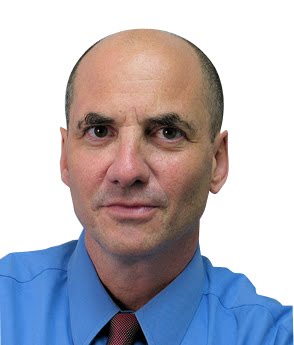
It’s become a tradition to go the shore every summer and while staring into the rhythmic surf, with its endless sequence, I’m reminded of the cycle of the Hebrew year, its ongoing pattern and its onward projection.
Henri Bergson, the French philosopher who was also Jewish, described time not as cut up segments of momentary sensations, but as flow. Because of memory, each wave that passes becomes part of every other.
Like the ocean, on Rosh Hashanah, the last day is connected to the first day.
But how do we reconcile time, when an altered state of reality poses as the past and a present is seen through the lens of an unavoidable media?
That same Sunday, while looking out onto the infinite horizon, a wireless link connected me and held me captive both to an imaginary, bygone world of Baltimore, along with one I thought I left behind.
On AMC’s “Mad Men”, a dapper Don Draper, headed down to Baltimore and the prized London Fog account which was a Baltimore based business.
They even dined at the historic Haussner’s restaurant. Both establishments are now gone with the tide.
Meanwhile in another part of the wireless world, the day’s news from Baltimore was of the contemporary nasty and brutish reality of shootings in the city that bleeds.
Juxtaposed and spliced, the past and the present clashed. The wireless world was whizzing the stuff of The Wire back from the series’ syndicated turf, streaming it in living color.
Once Baltimore had been a city known for providing manufacturing jobs with companies like London Fog. The snappy dressers of Mad Men and
cool veneer they wear, covers what lurks underneath and truly troubles them. The sharkskin lends a protective coating like the sheen layered onto the slick ads they create.
The airbrushed prints, their coifs and clipped speech is camouflage for what lies they labor over in their lives.
Mimetically, Mad Men’s sleek style is all the rage and is depicted in an article and flamboyant spread of Annie Lebovitz’ photos in the current Vanity Fair.
Doubtless, the show about the early 1960s will influence 2009’s Fall Fashion, which is ironic, as now I’ll see people in Baltimore dressing the part, based on a show whose narrative just illustrated how Baltimore, once was the home of London Fog and a locale where ad men were able to manipulate a public into buying their wears.
It’s a contemporary show about a long, lost world, where men who create ads for us to see that world through, will now influence real people living in the same city that’s since lost the manufacturing base the show depicted.
But perhaps, we should be placated in this postmodern pastiche. At least on its surface, it’s not the harsh and violent world many viewers and the world, have come to associate these days with Baltimore.
When Anthony Bourdain recently did a segment on his show for Travel Channel, Baltimore was described as the home of The Wire and a violent world of crime in the heart of the Rust Belt.
Bordain’s skewered view is tainted, not by reality, but by what he knows from fictional television programs projected through the lens of HBO.
While there’s realism in The Wire, Bourdain’s take is indicative of how we base reality off fiction. It’s become the inverted method from which life is consumed and lived. I escaped to the beach to get back to the state of nature, yet couldn’t help being reminded due to the jolting tide of technology drowning us.
Rather than fight the current, we resignedly brought our devices with us.
How does one reconcile one’s past on Rosh Hashanah, in light of our divided lives, which are bifurcated due to fiction’s invasion into reality?
Time will tell. There are two days to dwell on the subject—one for the past to flow into the next day’s future.
